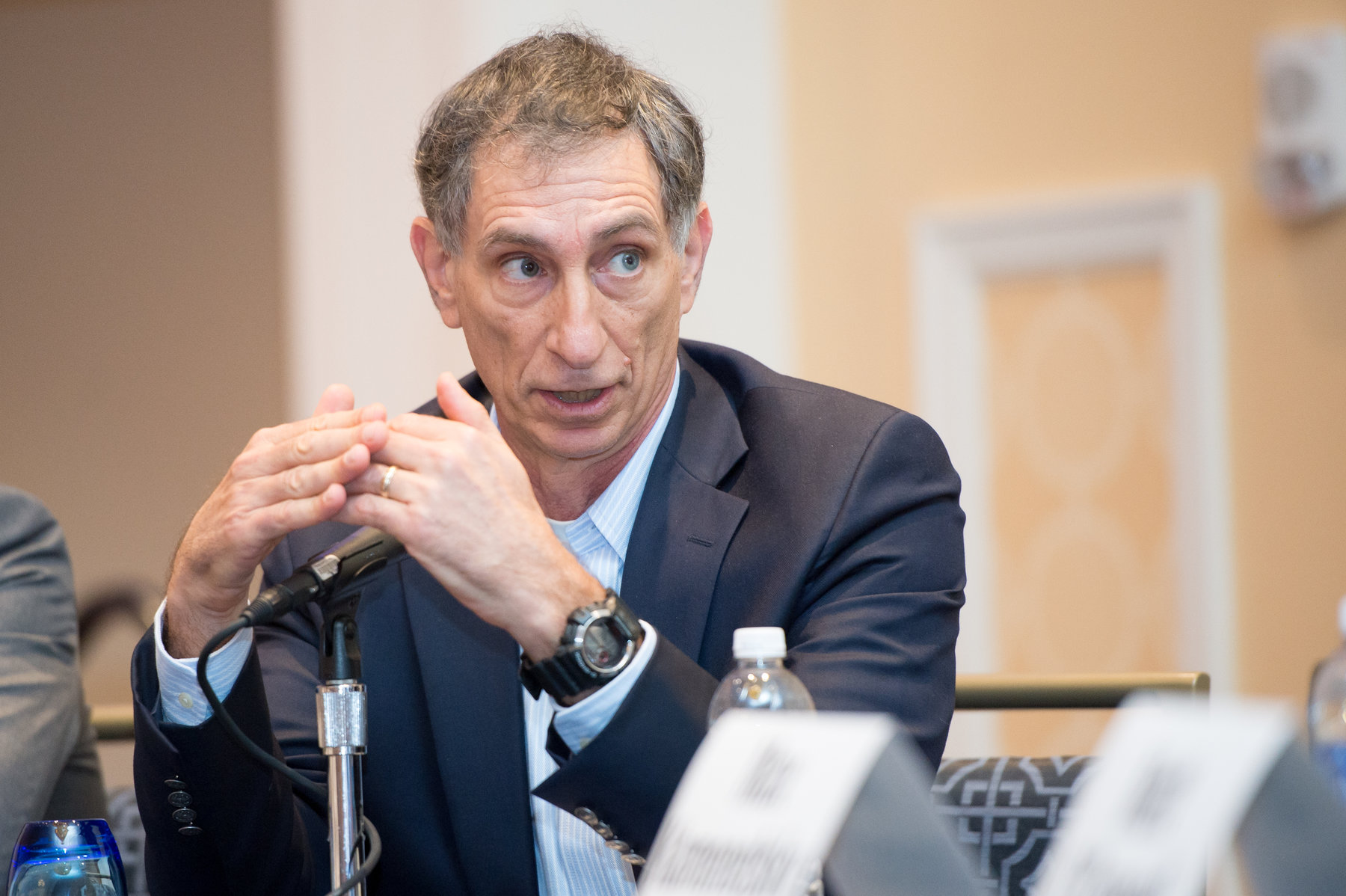WASHINGTON — Viasat says it is open to building a constellation of nearly 300 satellites in low Earth orbit if it can qualify for some of the $20.4 billion in broadband subsidies the U.S. Federal Communications Commission intends to dole out under the Rural Digital Opportunities Fund.
Viasat CEO Mark Dankberg said May 27 that the company’s view on orbits remains the same — Viasat has long defended geostationary orbit as the best vantage point for satellite broadband — but the possibility of government funding makes LEO worth pursuing anyway.
“It’s the demand side that we’re after, and the only thing that’s really changed on the demand side are government subsidies,” Dankberg said during a presentation with investment management firm AllianceBernstein.
Viasat has for the past several years been focused on a trio of geostationary broadband satellites collectively referred to as ViaSat-3, each of which will have a terabit or more of total capacity. Last month, the company gained FCC approval for a medium-Earth-orbit constellation of 20 satellites, a system Viasat had not committed to building but talked about as possibly augmenting its GEO fleet.
Now Viasat wants the FCC to transfer that same approval to a LEO constellation of 288 satellites it says could help close the digital divide in the United States.
Viasat’s LEO constellation would operate at 1,300 kilometers using the same Ka- and V-band frequencies recently authorized for MEO, according to a May 26 FCC filing. Each satellite would support 96 gigabits per second of throughput, enabling a collective 27 terabits of internet connectivity fanning out 60 degrees north and south of the equator.
Dankberg said LEO would enable Viasat to send signals fast enough to drop latency below 100 milliseconds — a bench mark the FCC has given considerable weight in deciding who receives subsidies from its Rural Digital Opportunities Fund.
“We had a purpose in MEO, but the biggest factor in wanting to lower the altitude is really the amount of funding that the FCC is aiming at low latency communications,” Dankberg said during a May 26 earnings call.
An uphill battle
Viasat was the only satellite operator to be awarded FCC subsidies from an earlier FCC program called the Connect America Fund Phase 2, having been allocated $122 million from the $1.49 billion program the FCC pledged to spend from 2018 to 2028. Dankberg said Viasat’s experience with the Connect America Fund Phase 2 gave it a good sense of how the FCC evaluates bids.
The FCC released rules May 19 covering how the first $16 billion of the $20.4 billion Rural Digital Opportunities Fund, will be spent. Funds awarded under the program’s first phase will be available through 2030. A start date has not been announced for the second phase, which includes $4.4 billion in subsidies plus any funds not allocated during the first phase.
Applicants for Rural Digital Opportunities Fund money will be split into four performance tiers, with providers offering at least 1,000 megabits per second downloads and 500 Mbps uploads with less than 100 milliseconds of latency eligible for the most funding. No satellite operator has reliably proven they can reach those standards, the FCC said.
The FCC’s next two performance tiers — 100/20 Mbps and 50/5 Mbps — also exceed what satellite operators can deliver, according to an FCC survey. While Viasat told the FCC it achieved 100 Mbps download speeds in select geographies, neither it nor its competitor Hughes Network Systems showed they could exceed 3 Mbps uploads.
Such slow upload speeds would put satellite providers in the competition’s lowest performance tier: 25/3 Mbps, the FCC’s current threshold for “broadband” service.
Another challenge for Viasat and other satellite operators is that the FCC’s rules treat low- and medium-Earth-broadband systems such as those being built by SpaceX and others to be unproven solutions for residential customers and thus not eligible for the subsidies despite their promise of low latency and high speeds.
The Rural Digital Opportunities Fundis “not the appropriate venue to test unproven technologies using universal service support,” the FCC said.
Dankberg, acknowledging the difficulty of those rules, said Viasat’s focus is on how the FCC grades companies in the second phase of the program, which includes $4.4 billion in subsidies plus any funds not allocated during the first phase.
“Assuming that the FCC does allow LEO to be eligible in the Phase 2 part of the Rural Digital Opportunity Fund, the opportunity for funding is far in excess of the increase in what the constellation would cost,” Dankberg said.
The FCC is scheduled to vote June 9 on the proposed rules for the first first phase of Rural Digital Opportunities Funds. If at least three of the agency’s five commissioners vote in favor of the rules, bidding for the program’s first $16 billion would happen Oct. 29.
Funding reserved for the second phase of the program would become available only after the FCC has new broadband maps to better identify rural homes and businesses in underserved areas, FCC spokesman Will Wiquist said by email. He did not respond to SpaceNews inquiries about when those maps would be completed.
